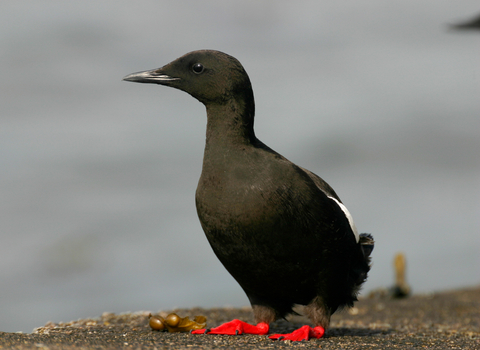Black guillemot
Look out for the black guillemot all year-round at scattered coastal sites in Scotland, England, Wales and the Isle of Man. It tends not to travel far between seasons, breeding and wintering in the same spots.
Enw gwyddonol
Cepphus gryllePryd i'w gweld
January to DecemberSpecies information
Ystadegau
Length: 30-32cmWingspan: 52-58cm
Weight: 300-460g
Average lifespan: 11 years
Classified in the UK as Green following a 2024 update to the Birds of Conservation Concern 5: the Red List for Birds (2021).


